Fukuoka Weather: Best Time to Visit and What to Wear

Looking to make the most of your first trip to Fukuoka? This article covers Fukuoka’s weather and the best times to visit. We’ve included tips for choosing clothes based on the weather and popular seasonal attractions, so be sure to check it out!
Features of Fukuoka’s Weather
Fukuoka is a city that experiences seasonal changes in weather. It’s relatively warm throughout the year, however, during winter, you should be cautious of the Sea of Japan’s unique climate which results in shorter daylight hours.
For the best sightseeing experience in Fukuoka, we recommend visiting in spring (March - May) or autumn (September - November).
Seasonal Weather and Recommended Clothing in Fukuoka
Spring (March - May)
Spring in Fukuoka can feel cool in the mornings and evenings, but temperatures rise during the day, making for pleasant weather. With the cherry blossoms also in bloom, you can enjoy charming scenery as well.
Average Temperature and Relative Humidity
March: 12.1°C (53.8°F), 65.3%
April: 16.2°C (61.2°F), 66.0%
May: 20.7°C (69.3°F), 66.1%
Source: Past Weather Data Search by MLIT Japan Meteorological Agency (Japanese)
The best attire for sightseeing in Fukuoka during the spring is a long-sleeved T-shirt or cardigan. If you have plans for the evening, it’s a good idea to bring a spring coat or jacket to stay warm.
Summer (June - August)
Summer in Fukuoka is hot and humid, making you want to play in the water at the beach or river. In August, be sure to take adequate precautions against heat stroke before heading out as temperatures on some days can soar to the point of causing heat exhaustion.
Average Temperature and Relative Humidity
June: 23.7°C (74.7°F), 76.1%
July: 27.8°C (82.0°F), 76.8%
August: 28.8°C (83.7°F), 74.5%
Source: Past Weather Data Search by MLIT Japan Meteorological Agency (Japanese)
Cool and breathable clothing, such as short-sleeve T-shirts and shorts, is suitable for sightseeing in the summer. Prepare to sweat while you explore and be sure not to forget to bring a handkerchief or sports towel.
Autumn (September - November)
As temperatures cool down in autumn, the days become pleasant, allowing you to enjoy sightseeing in a refreshing mood.
Average Temperature and Relative Humidity
September: 25.1°C (77.2°F), 76.3%
October: 19.9°C (67.8°F), 69.5%
November: 14.9°C (58.6°F), 68.7%
Source: Past Weather Data Search by MLIT Japan Meteorological Agency (Japanese)
For autumn sightseeing, just like in spring, it’s recommended to wear long-sleeved T-shirts and cardigans. If you plan to sightsee mountainous areas, be sure to bring a light trench coat or mountain parka.
Read also
Winter (December - February)
Winter in Fukuoka consists of cold, dry winds, with some days experiencing extremely low temperatures. In January and February, mountainous regions may see snowfall, so be sure to take adequate measures against the cold.
Average Temperature and Relative Humidity
December: 9.2°C (48.6°F), 65.1%
January: 7.4°C (45.3°F), 65.8%
February: 8.2°C (46.8°F), 63.5%
Source: Past Weather Data Search by MLIT Japan Meteorological Agency (Japanese)
For winter sightseeing, you should not only wear a down jacket or coat, but also prepare scarves and gloves to prevent the cold from seeping in. If you’re sensitive to the cold, wearing winter tights and thermal undergarments will help you feel more comfortable.
Make sure to choose clothes that you can easily adjust based on the day’s temperature and weather.
Read also
Spring and Autumn: The Best Times to Visit Fukuoka
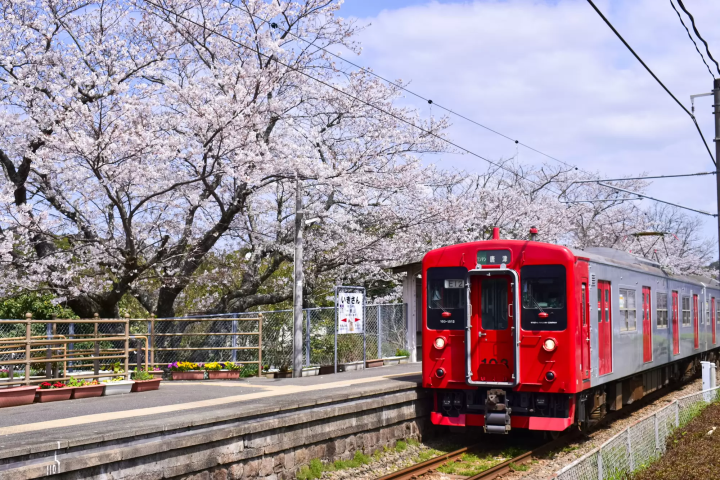
The best seasons for sightseeing in Fukuoka are spring and autumn. Cherry blossoms typically bloom between late March and early April, with spring bringing pleasant weather for enjoying walks while viewing the flowers.
Autumn is a time to enjoy the leaves as they turn red and yellow. With relatively stable weather, be sure to take your time to fully appreciate the breathtaking scenery created by nature to your heart’s content.
Top 3 Sightseeing Spots in Spring
Akizuki Castle Town

Akizuki Castle became famous through the NHK historical drama 'Gunshi Kanbei,' which aired in 2014. Although the castle itself no longer exists, the atmosphere of the era still remains in the castle town.
Surrounding Akizuki Castle Town are clear streams and mountains, allowing you to enjoy scenery that beautifully combines both nature and the town. The road leading from the castle town to the castle is lined with about 200 cherry blossom trees, creating a charming spot that welcomes visitors for a stroll through a 500-meter-long cherry blossom tunnel in the spring.
Akizuki Castle Town
Address: Fukuoka, Asakura, Akizukinotori
Official Website: https://www.crossroadfukuoka.jp/en/spot/12701
Kokura Castle
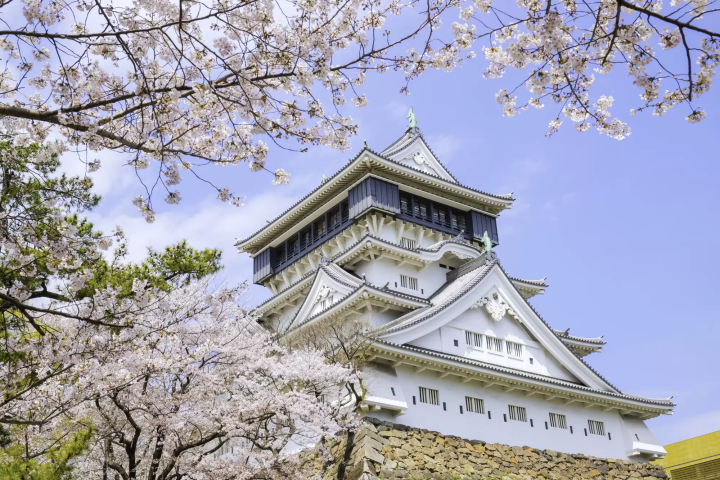
Kokura Castle was fully constructed by Tadaoki Hosokawa over seven years starting in 1602, following the foundation laid by Katsunobu Mori in the late Sengoku period. Kokura Castle is known as the only castle in Fukuoka with a castle tower.
The surrounding area is an ideal cherry blossom viewing spot, featuring about 300 trees, including Yoshino and weeping cherry varieties. At night, cherry blossom illuminations create a romantic atmosphere.
Kokura Castle
Address: Fukuoka, Kitakyushu, Kokurakita, Jonai 2-1
Business Hours: April - October 9:00 - 20:00, November - March 9:00 - 19:00 *Hours may vary by day
Official Website: https://kokura-castle.jp/ (Japanese)
Kawachi Wisteria Garden
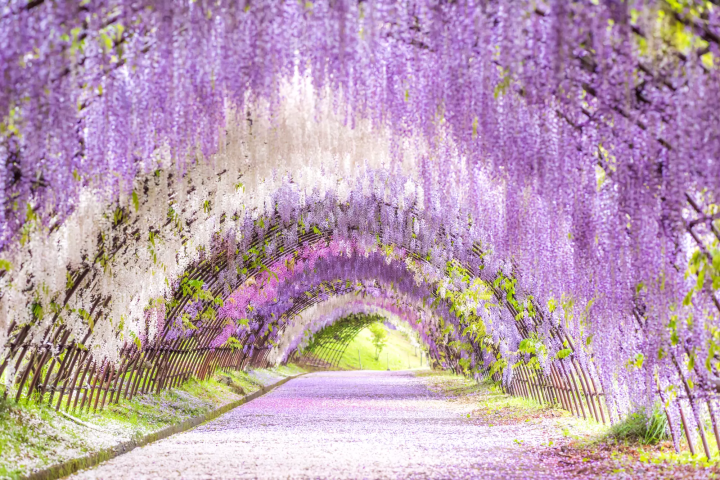
Kawachi Wisteria Garden is said to have been opened by its founder as a testament to their life. It gained fame after being selected by CNN, an American news channel, as one of the “31 Most Beautiful Places in Japan” and now attracts visitors from all over the world.
The highlight of Kawachi Wisteria Garden is its large wisteria tunnel, which stretches nearly 110 meters in length. The flowers bloom in shades of bluish purple, pink, and white, creating a gradation that will leave you speechless. Walking through the tunnel feels as if you’ve stumbled into the world of a painting.
Kawachi Wisteria Garden
Address: Fukuoka, Kitakyushu, Yahatahigashi, Kawachi 2-2-48
Business Hours: Late April - early May 8:00 - 18:00, mid-November - early December 9:00 - 17:00
Official Website: https://kawachi-fujien.com/ (Japanese)
Top 3 Sightseeing Spots in Autumn
Picturesque spots that showcase stunning sunsets and colorful autumn leaves are a must-visit while sightseeing in Fukuoka during autumn.
Itoshima
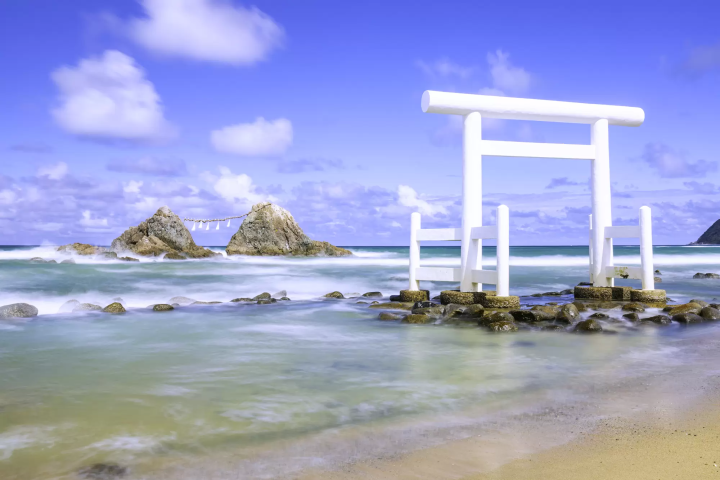
Itoshima is a driving destination where serene countryside stretches out, surrounded by the sea and mountains.
Itoshima boasts many highlights, including scenic cafes where you can watch stunning sunsets and unique general goods stores. The coastline also features a romantic scenic spot recognized as one of the “100 Best Sunsets in Japan.”
From October to April is the season for oysters, a local specialty of Itoshima. At oyster huts open in the fishing port, you can satisfy your hunger by grilling fresh oysters yourself to your heart’s content.
Official Website: https://kanko-itoshima.jp/
Miyajidake Shrine
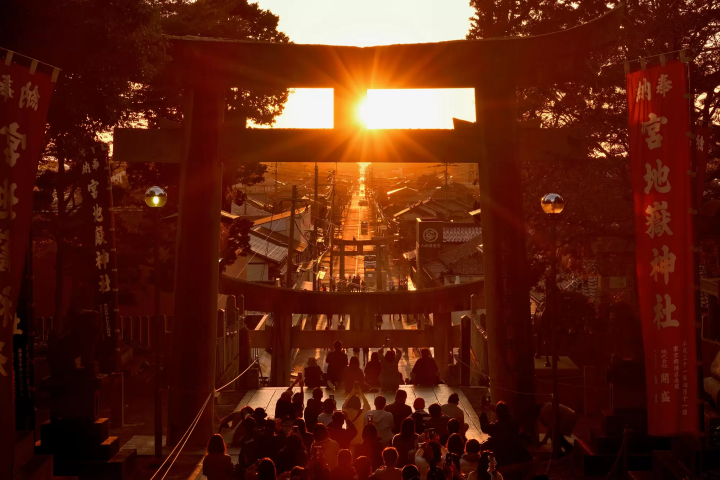
Miyajidake Shrine is known for its approach that leads straight toward the ocean. In October and February, the approach is illuminated by the evening sun, allowing visitors to admire the shining “Path of Light.”
Miyajidake Shrine is also famous for having three of Japan’s largest shimenawa (rope talisman), taiko drum, and bell. The shimenawa measures 11 meters in length, the taiko drum has a diameter of 2.2 meters, and the bell weighs 450 kilograms, making each item an overwhelming yet valuable sight worth experiencing.
Miyajidake Shrine
Address: Fukuoka, Fukutsu, Miyaji Motomachi 7-1
Official Website: https://www.miyajidake.or.jp/ (Japanese)
Raizan Sennyoji Daihioin Temple
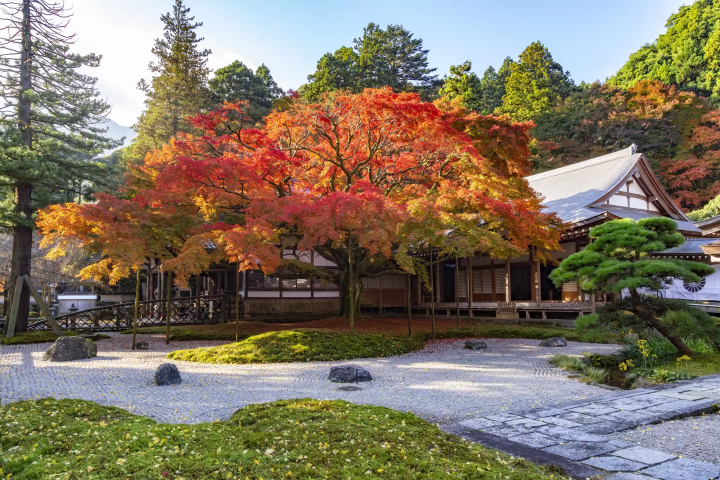
Raizan Sennyoji Daihioin Temple is a distinguished head temple of the Shingon sect, Daikakuji school.
At the Kannon Hall on the temple grounds, you can view the Eleven-Faced Thousand-Armed Kannon Statue, which is designated as an important cultural property of Japan.
A highlight of autumn is the large maple tree, estimated to be over 400 years old, located on the temple grounds. Around November, when the maple leaves turn bright red, the grounds bustle with visitors.
The Thunder God Shrine, located a short hike up the mountain from Daihioin Temple, is a spot where you can enjoy the autumn leaves of ginkgo and Japanese maple trees. When the ginkgo leaves fall, the ground is blanketed in a golden carpet.
Raizan Sennyoji Daihioin Temple
Address: Fukuoka, Fukutsu, Miyaji Motomachi 7-1
Official Website: https://sennyoji.or.jp/ (Japanese)
Enjoy Your Trip in Outfits Suited to Fukuoka's Climate
As Fukuoka’s weather changes with the seasons, be sure to familiarize yourself with the characteristics of each season to choose comfortable clothing for sightseeing. If you want to experience seasonal beauty on your first trip to Fukuoka, spring and autumn are the best times to visit.
Read also
Written by Kakutama editorial team
All pictures courtesy of pixta
This is the official account of MATCHA's editorial department. Our articles feature useful travel information for visitors to Japan, from how-to guides to recommended places to visit.






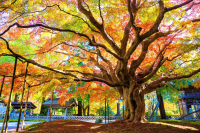


































![[2026] Top 5 Strawberry Picking Spots in Tokushima, Naruto| Farms and Access Guide for January to May](https://resources.matcha-jp.com/resize/720x2000/2025/03/06-227165.webp)



